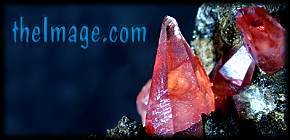
|
|
|||
|
Name: |
opal |
|
|||
|
Class: |
Silicates |
||||
|
Chemistry: |
SiO2 * nH2O Hydrated Silica |
||||
|
Color(s): |
colorless, red, green, blue, brown, black, milky, yellow etc. "precious opal" is distinguished by "color-play" or "fire" |
||||
|
Hardness: |
5.5 - 6.5 |
SpecGrav: |
1.0 - 2.5 |
||
|
Fracture: |
conchoidal |
Cleavage: |
none |
||
|
Crystal: |
amorphous (a layered silica formed in a precipitation process and cemented with a hydrous silica cement) |
||||
|
Envronment: |
precipitation process, or "fossilization product" as in the replacement of organic materials (opalized wood, clam, shell, etc.) |
||||
|
Association: |
zeolites, limonite, chalcedony |
||||
|
Locals: |
| Austrailia | Brazil | Nevada,Wyoming,Montana, USA | Tanzania | Iceland | Mexico | |
||||
|
Misc: |
Opal may go by a number of names depending on the kind, some examples include hyalite (clear transparent samples 1-3 below), Cloudy or Milky (samples 4-6), clear or slightly cloudy (samples 7-9), fossilized opal (samples 10-11), sand stone opal (samples 12-14), Mexican opal (15), fire opal (16), green prose opal, brown liver opal ... It is easily damaged by dehydration thermally or chemically. Heat can dehydrate and crack opal, and solvents with an affinity for water can damage opal (acetone, strong bases, some acids). Soluble in KOH solutions. |
||||
|
|
|
|
|
|
|
|
|
|